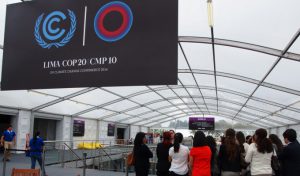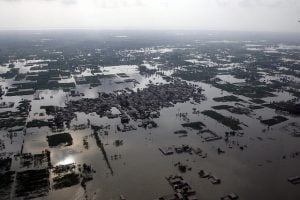The negotiations under the United Nations Framework Convention on Climate Change (UNFCCC) have staved off collapse, but only by putting off all the major divisive issues to next year, and fudging those decisions that could not be postponed at the Lima meeting.
At the Lima talks, negotiators from around 190 countries were quick to postpone discussion on sections that will likely be key elements of a global agreement to combat climate change, a deal that the UN wants finalised in Paris next December.
The few initial sessions on the so-called “elements text” were enough to convince everyone at the Lima meeting that there was no hope of progress on major issues.
Talks will resume in Geneva next February, when the debate about distinguishing the effort between developed and developing nations is expected to surface all over again, and with renewed ferocity.
With the most contentious issues effectively parked until next year, the Lima summit was left with one major job: agreeing a format under which governments will propose national actions to cut carbon emissions.
In UN-speak, these are called Intended Nationally Determined Contributions (INDC). With governments having more or less given up on the idea that the UN system can decide which countries need to control greenhouse gas (GHG) emissions, and to what extent, INDCs are expected to form the bedrock of a Paris agreement.
Overall, the world is moving into an era where action to combat climate change is determined by individuals, businesses, local, provincial and national governments, rather than a top-down determination by the UN system.
The UNFCCC acknowledged the power of voluntary action when it helped launch what is called the Nazca Climate Action Portal to capture what is being done by provincial and city governments as well as private firms to combat climate change.
At Lima, a voluntary approach became more firmly entrenched – and there is not even an agreed date on when the INDCs should be submitted.
The resolution does mention a March 31, 2015 deadline, but governments can also submit by June 30, or “as soon as possible after that”. A long game of poker on INDC submissions next year looks likely, as many countries may hold back from showing their hands until the last possible moment.
Yet despite the brinkmanship at the Lima meeting, Christiana Figueres, the UN’s climate change chief, was keen to highlight “a new level of realism” at the talks.
She added that the talks had reached an “understanding about what needs to be done now, over the next 12 months and into the years and decades to come if climate change is to be truly and decisively addressed.”
But a call in the Lima resolution to phase out GHG emissions by 2050 isn’t backed by anything tangible, and is looks likely to be dropped from a negotiating text in Paris.
A major failure of the Lima summit was to get any commitment from rich nations on what they plan to do between now and 2020.
The Paris accord is supposed to come into effect only after that, and developing countries have been demanding that industrialised countries ramp up their GHG emission mitigation right now under the existing Kyoto Protocol. But with the limelight firmly on the Paris deal, there was no discernible movement on current commitments.
Quarrels about national contributions came in a year when scientific warnings have grown increasingly shrill and the world is on a path to burn more coal, which environmentalists say underlines the need for a comprehensive agreement.
Even the more tangible achievements of this year’s summit were overshadowed by the perennial rich country versus poor country divide.
During the conference the initial capitalisation of the Green Climate Fund (GCF) touched US$10.2 billion, although Indian environment minister Prakash Javadekar pointed out that the fund should have at least US$40 billion by now if rich nations are likely to keep their promise to provide US$100 billion a year by 2020 to help poor nations deal with climate change.
While most governments welcomed the Lima resolution, reactions from experts and activists were more mixed, pointing out that the path to a Paris agreement will be littered with obstacles.








